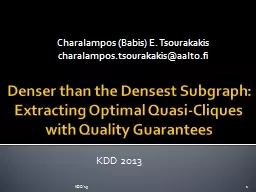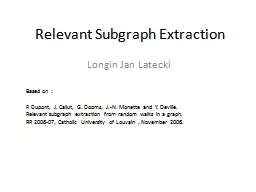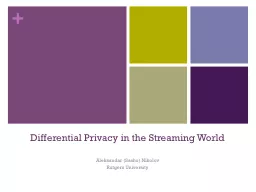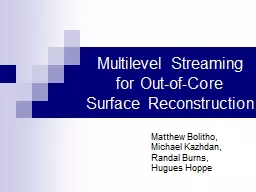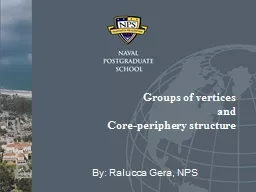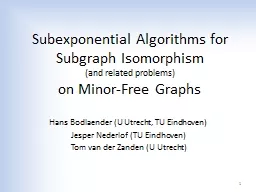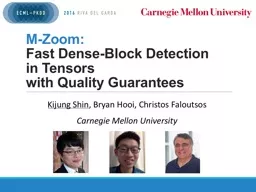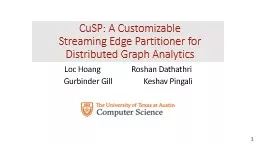PDF-Dense Subgraph Maintenance under Streaming Edge Weight Updates for Real time story identification
Author : tatyana-admore | Published Date : 2017-04-06
581 579 585 578 577 574 576 584 580 575 582 583 Figure1Realtimeidenticationof
Presentation Embed Code
Download Presentation
Download Presentation The PPT/PDF document "Dense Subgraph Maintenance under Streami..." is the property of its rightful owner. Permission is granted to download and print the materials on this website for personal, non-commercial use only, and to display it on your personal computer provided you do not modify the materials and that you retain all copyright notices contained in the materials. By downloading content from our website, you accept the terms of this agreement.
Dense Subgraph Maintenance under Streaming Edge Weight Updates for Real time story identification: Transcript
Download Rules Of Document
"Dense Subgraph Maintenance under Streaming Edge Weight Updates for Real time story identification"The content belongs to its owner. You may download and print it for personal use, without modification, and keep all copyright notices. By downloading, you agree to these terms.
Related Documents


